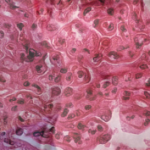It is worth pointing out that while induction of complete response or remission generally occurs within three to six months in systemic vasculitis, it may take longer in LN (three to 36 months, with an average of 18 months in the NIH trials), with only 50% to 60% of lupus patients reaching this endpoint by six months. This delay in benefit poses a significant problem in the treatment of lupus especially in the case of MMF where there is no long-term experience with the outcome of such patients. In such cases treated with MMF, we usually add one to three pulses of IV-MP when a response has not yet occurred; if no further improvement is observed, we then switch to IV-CY. In the case of failure to respond to IV-CY, we also use pulse steroids and either wait for another six months or switch to MMF. If both agents have failed, we use rituximab in combination with MMF or IV-CY.
Perspective: Time for a Strategy in Lupus
Where do these trials leave us now? The excitement with new agents and anticipation of greater success are understandable, but we should guard against a premature declaration of their superiority. We should also be cautious about rushing to discredit old treatments that have served patients well despite their shortcomings. Importantly, clinicians, regulatory agencies, and industry need not lose sight of the lifelong course of the disease, and pursue long-term follow-up data to enable the full assessment of the safety and efficacy of the newer agents. To this end, it is rather disappointing that these data are not yet available for the MMF trials.
In our opinion, the most important information derived from lupus clinical trials is not necessarily the comparison among immunosuppressive agents, but rather the strategy for tight control of the disease, targeting disease remission if possible within the first six months, and its long-term maintenance (see Figure 2). Thus, almost every single trial has shown that, irrespective of the treatment used, a major response within the first three to six months is associated with a good long-term outcome.
Instead of debating the merits of individual agents, the community has come to agree that most patients should receive three pulses of IV-MP initially with moderate doses of steroids together with an immunosuppressive agent based upon the severity of the disease and patient choices/profile. Failure to achieve a major clinical response in the first three to six months should provoke consideration of advancing to more aggressive protocols. Towards this goal, combination and sequential use of existing agents is of paramount importance, as several RCTs have shown.
